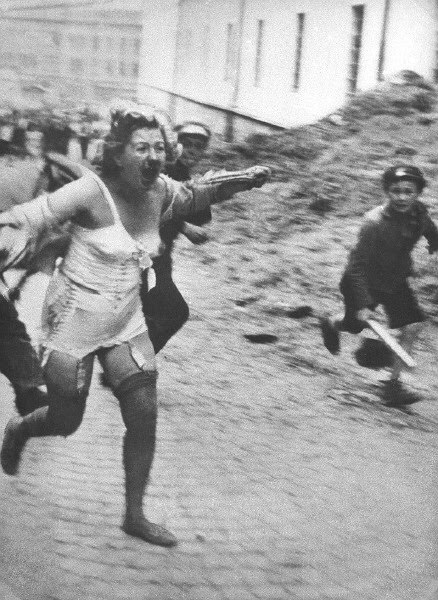
While Ivy League professors equate the Soviet Union with Nazi Germany, the Soviets fought the Nazis and ended violent anti-Jewish pogroms—which now threaten to return.
The July 21, 2022, issue of London Review of Books published an essay by Abigail Green reviewing Jeffrey Veidlinger’s books In the Midst of Civilised Europe: The Pogroms of 1918-21 and the Onset of the Holocaust, which analyzed the early history of independent Ukraine, specifically the years of the “People’s Republic of Ukraine” from late 1917 to 1920. The “People’s Republic” was a short-lived, pro-capitalist government which allied with Germany and the rest of capitalist Europe in opposing the Bolshevik Revolution of 1917 and seeking to drown it in blood.
Titled “It all fell apart,” the LRB essay analyzes the anti-Jewish prejudice and extreme violence which marked the “People’s Republic of Ukraine,” led by the notorious dictator Symon Petliura. This history is highly relevant to today’s Ukraine because the current rulers of that country identify with the government that helped perpetrate that tragic history. Today, they deny that racism and national chauvinism against Jews, Roma and other oppressed peoples in Ukraine is widespread, and they deny that neo-Nazi and other extreme-right ideologies are widespread, including within the government’s own ranks.
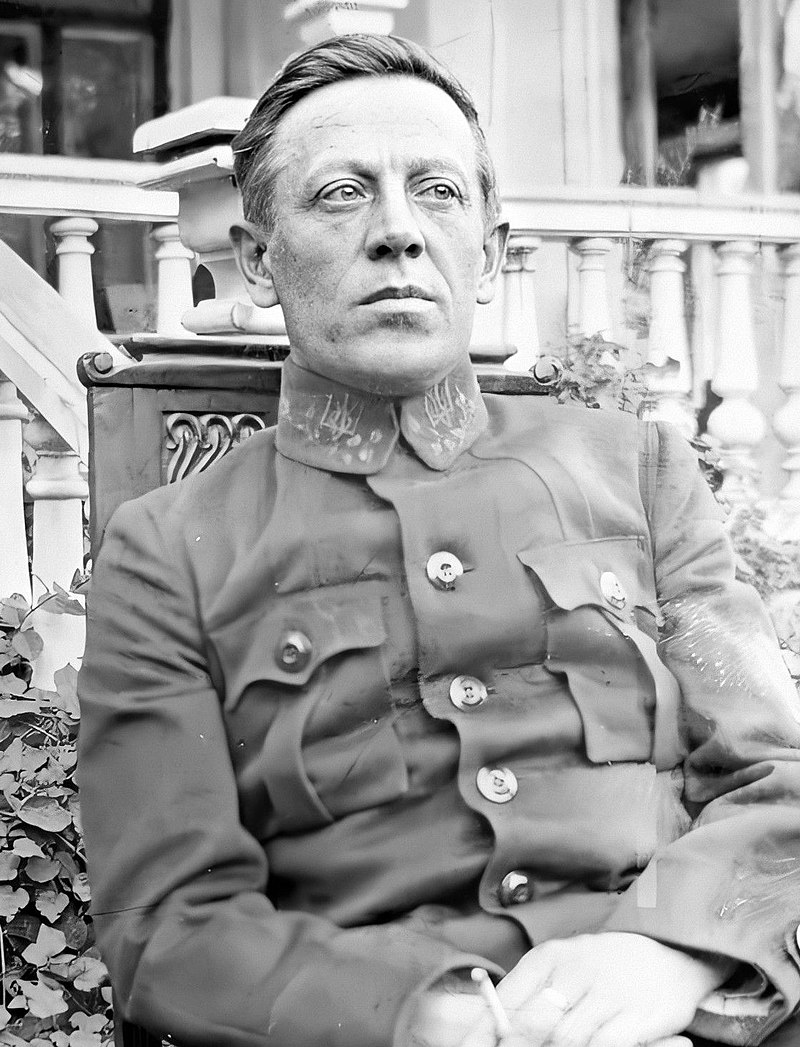
The LRB essay is very informative, but in one respect it is very disappointing. That’s because it makes little reference to the systematic efforts to combat anti-Jewish and other prejudices by the early leaders of the Ukrainian Soviet Socialist Republic (founded in 1920) and the Union of Soviet Socialist Republics (USSR, or “Soviet Union,” founded in 1921). Soviet Ukraine was formed in opposition to the “People’s Republic” and the odious ideology of hatred toward Jews and other national minorities that it perpetrated.

Soviet Ukraine and the broader Soviet Union fought against all forms of racism and national discrimination during their founding and during the years that followed. This history is omitted by the LRB essay. This omission suggests a deep ambivalence if not hostility to the goals and the lasting achievements of the 1917 Bolshevik Revolution. It also fits with the prevailing anti-Russia prejudice in Western countries today as a result of the anti-fascist military operation that has been initiated by the Russian Federation in Ukraine.
Dmitriy Kovalevich is the special correspondent in Ukraine for New Cold War (website: newcoldwar.org). He writes a monthly situation report on Ukraine; his latest report (August 2022) is here. The following essay by him serves to fill in large missing pieces in the London Review of Books essay. The essay is co-produced by New Cold War and CovertAction Magazine.
Today’s Ukraine and its historical antecedents have long been a crossroad where various cultures, civilizations and peoples lived. It was and remains a deeply multinational entity and has been known by different names in previous centuries.
Over the past 30 years, Ukraine has been actively pursuing policies of assimilation of national minorities, seeking to “Ukrainize” ethnic Russians, Hungarians, Greeks and Moldovans living in this historic territory. These policies can be considered among the reasons for the current conflict in the Donbas. They are a formal reason for Russian military intervention beginning in February of this year because “Ukrainization” policies have amounted to discrimination that denies equal rights to non-Ukrainian ethnicities and even wages murderous violence against those who protest.
If today, Russians and Russian-speaking Ukrainians are considered by Ukrainian ultra-nationalists to be the main “enemies” of the country, then in earlier times it was Ukrainian Jews who were considered enemies and targeted for discrimination and violence. Nationalist pogroms in the early 20th century, the years of the Holocaust in Germany and the countries to its east, and post-World War II migration to Israel have significantly reduced the number of Jews in Ukraine. The economic problems of the 1990s also contributed to an accelerated migration of ethnic Germans, Greeks and Russians out of Ukraine, simplifying the once very complex ethnographic map of the multinational country.
Between urban and rural life
Anti-Semitism in Ukraine, unfortunately, has long and deep roots, probably as old as the Jewish population in these lands. The first known mention of the future city of Kiev is the so-called “Kievan letter” from circa 930 AD, found in Egypt.[1] It is written in Hebrew and signed by representatives of Kiev residents with Jewish, Turkic and Slavic names and speaks of the multinational character of the city community at its dawn.
However, at least since the 16th century, anti-Jewish pogroms (violent riots intended to kill or drive away ethnic minorities, notably Jews) have regularly taken place in Ukraine. In the beginning, these reflected the religious wars and church obscurantism of the time. Christian priests often called for pogroms against “infidels.”
In 1768, during the “Koliivshchyna” uprising against Polish landlords and the Polish-Lithuanian Commonwealth, the infamous “Uman Massacre” took place, during which the entire Jewish and Polish populations of the city of Uman were slaughtered[2] in the name of Christian faiths. The city is located between Kiev and Odessa, in what was then the far eastern part of the Commonwealth.
Today, Hasidic Jews travel to Uman every year to celebrate the New Year according to the Jewish calendar. It is no coincidence that pilgrims come to Uman. The founder of Hasidism, Nachman of Breslov,[3] bequeathed to bury his body at the site of the mass death of Jews, considering the place to be sacred. “Koliivshchyna” has become an “inspiration” for the modern, far-right Azov Battalion and Svoboda (“Freedom”) Party. In the past, they have commemorated April 14 with torch marches.[4] Most people in Ukraine today do not know this history.
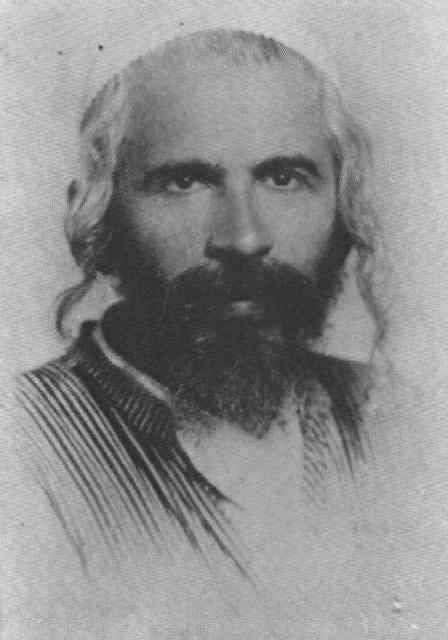
“Koliivshchyna” became one of the factors in the collapse of the Polish-Lithuanian state in the late 18th century. After its partition and the entry of a part of Poland into the Russian Empire, the Russian tsarist authorities defined the so-called Pale of Settlement (borders) of the Jews. They were forbidden to settle in the countryside and to work in agriculture. In only some cities of the western parts of the Russian Empire were Jews permitted residence.
During the period of feudalism, land was considered the most valuable resource, while urban, lower classes were considered the lowest categories of citizens. It was the development of capitalism that shifted the center of economic life to the cities. Thus, another component of Ukrainian anti-Semitism was the contradiction between the city and the countryside. Since the 19th century, the central part of most Ukrainian cities has been called Jewish neighborhoods. As a rule, these are narrow crooked streets, with one- or two-story houses. Such quarters still remain in Kyiv, Uman, Zhytomyr, Cherkassy, Kremenchug and other cities.
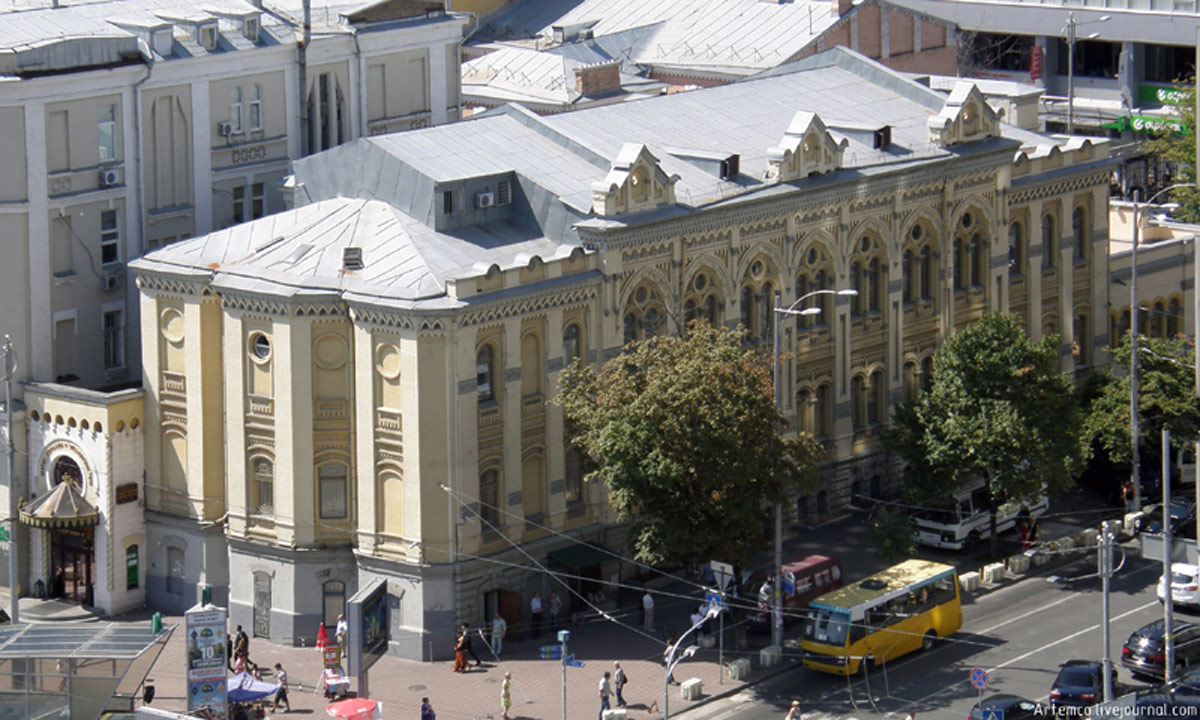
Dangerously educated
From the middle of the 19th century, the educated society of the Russian Empire began to embrace revolutionary and liberal ideas. The first revolutionary ideas, as a rule, were perceived by the educated sections of society, that is, people who could at least read and write, while most of the peasantry was illiterate. Jewish communities in Ukraine, unlike most Ukrainian and Russian peasants, taught their children to read and write, thanks to which Jews came to embrace revolutionary ideas earlier than the rest of society. However, despite their education, on the social ladder they were considered lower than an illiterate Ukrainian peasant.
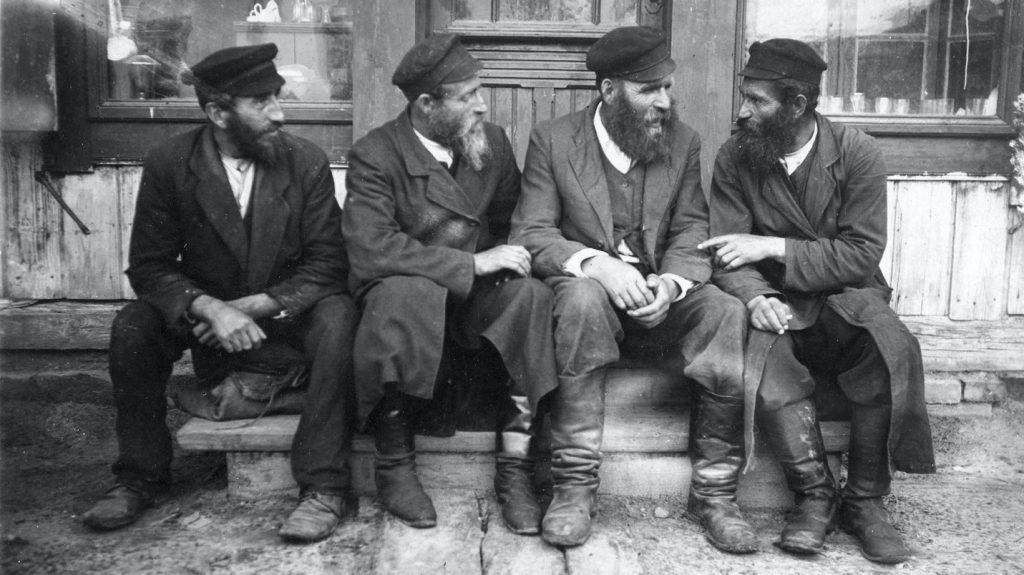
During this period, the tsarist local authorities, in order to combat dissent, add fuel to the fire of anti-Jewish prejudices, declaring Jews and simply educated students to be “pests” undermining social order and Christianity. In our time, with universal literacy, it is difficult to understand the ideas of communities in which total illiteracy reigned, as in the peasant communities in most of the Russian Empire. Belief in sorcerers and witches; causing injury and disease to people by training one’s “evil eye” on them; distrust of medicine and educated people, who were perceived as capable of performing magical rites causing harm—such beliefs were common and very harmful to the social fabric.
In the 19th century, massive cholera riots swept through the Russian Empire and western Ukraine (which was then part of the Austro-Hungarian Empire). Great Britain was struck as well.[5] Many of the victims were early medics and physicians (though there were few truly educated medics then). There was a popular belief that the medics were deliberately infecting Christian believers. Measures to disinfect cholera wells and other water sources caused violent uprisings, as it was believed that the sanitary services did not clean wells but poisoned them.
Potato riots also swept across the Empire. Government attempts to force peasants to grow potatoes met with massive ignorance and resistance. Following cases of poisoning caused by mistakenly eating potato berries, many peasants came to believe that educated people wanted to use potatoes to poison the ordinary people. Potatoes were popularly called “apples of the devil” and were considered omens of the coming of the Antichrist.
As P. Pavlov, a cantonist[6] of one of the settled companies of the Prussian regiment in the Russian army, recalls, “The old people believed that these educated people are the servants of the Antichrist, for they are educated, but overeducated to the point that they forgot about God.”[7]
Today, when we order French fries and drink purified water, it is difficult for us to understand the consciousness of our illiterate ancestors.
In such an environment, the most ridiculous of prejudices flourished. The appearance of a stranger in a village might coincide with the death of a child from tuberculosis, the loss of livestock, or hail that destroyed crops. In such circumstances, the fate of the stranger was usually unenviable.
If the stranger was also of a different faith or ethnic origin, he or she might be declared a sorcerer or witch. At the same time, the Ukrainians, Russians, Poles and representatives of other nations often became victims of anti-Jewish violence as well. Centuries of coexistence naturally led to many mixed marriages, so a “covert Jew” could be suspected of any person if his or her behavior, level of education or culture was somewhat different. In a number of cases, it was enough cause for suspicion if a person simply did not like to visit the church.

Bias and prejudices
The most absurd prejudices usually concerned children. The Roma were routinely accused of stealing children, and Jews were accused of killing Christian babies while performing religious rites. Surprisingly, such stereotypes are still alive among Ukrainian nationalists and neo-Nazis today. In July 2022, Mikhail Kovalchuk, a member of the Kiev City Council and head of the far-right National Patriotic Movement group, said that Orthodox Jews “commit ritual murders of children.”
“Most often their victims are small children, children of non-Jews [goyim]. Satanism is one of the forms of Judaism, where special attention is paid specifically to the sacrifices and feeding of their masters—the dark forces [the god Yahweh],” Kovalchuk wrote.[8] In any civilized country, such a politician would be prosecuted for inciting ethnic hatred.

The waves of anti-Semitic pogroms on the territory of present-day Ukraine are also notable for the active participation of women in them, both during the 1918-21 Civil War and during the Nazi occupation. In the memoirs of witnesses and victims of pogroms, one finds mention of the frenzy of Ukrainian women who literally tore the clothes from Jewish women.
Such hatred was partly due to the fact that urban women had more opportunities to dress, sew their own clothes and use cosmetics, even if they were representatives of the urban poor classes.
Jewish tailors and seamstresses in Ukraine were famous for their skills and ability to sew beautiful clothes from the cheapest materials. From that time until now, a popular joke in Ukraine tells of a Jewish tailor from Berdychiv (a small town in the Zhytomyr region with a large Jewish population) evaluating the new dress of a female aristocrat.
“Nice dress! Where is it from?” the tailor asks.
“It’s from a Parisian boutique!” comes the reply.
“And how far is that from our Berdychiv?”
“Thousands of miles!”
“My goodness, that might be far off in the boonies but they sew not badly.”
At the same time, traditional paternalistic morality dominated rural communities, surrounding women with masses of prohibitions, ofttimes frivolous but regulating her every step. In a rural community, a woman who dared to wear bright colors outside of a holiday), who used the simplest cosmetics or failed to cover her head in public, would be branded a prostitute and ostracized. In turn, young urban female Jews, who typically enjoyed greater freedom in the urban environment, were considered dangerous “competitors,” capable of stealing husbands away from the family and leaving a mother of many children without a breadwinner. In such situations, according to traditional morality, it was not the man who was guilty of running off with another woman, but rather the woman who was guilty of looking too attractive.
Alcohol abuse was another common source of anti-Jewish prejudice. Jews were forbidden to engage in agriculture, so many of them opened pubs and bars in urban areas. There, the urban lower classes and peasants would guzzle away their money. The hatred by the drunkards and their wives, left destitute and without a livelihood due to drunkenness, often spilled out against the owners of bars and pubs, sometimes escalating into an anti-Semitic pogrom. In an era of growing social tension, any spark, any drunken brawl in a bar, could lead to an irrational and senseless riot, as a result of which an entire city could be burned. This hardly improved the lives of ordinary people.
Analyzing the roots of anti-Semitism, one should understand that it was also skillfully used by reactionary forces when it was necessary to “let off steam” and vent discontent. Instead of anger and rage being directed against the rich and governing authorities, it would be turned against “the other.” In Ukrainian society, anti-Semitism was artificially fueled at the turn of the 20th century as dissatisfaction with the prevailing social system grew.
“The October Revolution finally cut the Gordian knot of all kinds of slanders and showed with its own eyes that under the guise of anti-Semitic and other national and religious pogroms, the revolutionary movement was actually beaten, the class consciousness of the working and peasant population was obscured, and reaction was artificially promoted. The old regime could not live without a pogrom drug, without inciting religious and tribal prejudices, without inciting one people against another,” wrote Soviet Professor Samuel Lozinsky in his work Social Roots of Anti-Semitism published in 1929.[9]
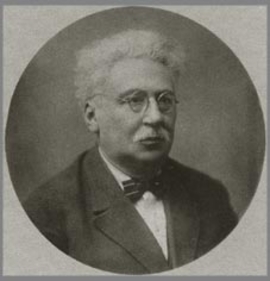
To counteract anti-Semitic sentiments after the formation of the Ukrainian Soviet Republic, it was necessary, first of all, to overcome the causes that gave rise to it. First of all, it concerned the issues of eradicating illiteracy. In a country where most of the peasants were illiterate, and most of the educated bourgeoisie migrated (White émigrés), such a task involved first training tens of thousands of teachers, and to train them—foundation of dozens of new universities, which also required their teaching staff. However, the literacy program did not cover western Ukraine, which until 1939 was a part of Poland. It was in this part that a high level of illiteracy and clericalism remained until the 1950s.
The Pale of Settlement, which forbade Jews to settle in capitals, rural areas and own agricultural land, was abolished immediately after the February Revolution of 1917. During the Civil War in Ukraine, the population of Jewish neighborhoods had to create self-defense units to protect themselves from nationalists and numerous gangs of robbers. A significant part of these detachments subsequently joined the Red Guard. The principles of internationalism made the Reds the least dangerous political force in the Civil War. In western Ukraine, in 1920, the short-lived Galician Soviet Republic arose, in which three languages were immediately declared official: Ukrainian, Polish and Yiddish.

Combating inequality in the early Soviet period
After the end of the Civil War and the flight of the bourgeoisie in 1921, there was an acute shortage of specialists and simply educated people. It was impossible to appoint or elect personnel for administrative work or officers of the Red Army who could not yet read, write and count. Appointments needed to take into account professional skills. For this reason, in the early years of Soviet power, the percentage of Ukrainians of Jewish origin in government was higher than their share in the total population. This fact would subsequently be used by Nazi propaganda.
Beginning in April 1923, the Bolsheviks in Ukraine began to pursue a policy of indigenization (“korenization”). At the time, leaders of the governing Bolshevik Party considered Great Russian chauvinism as a major impediment to economic and social development because it turned a blind eye to the national/social aspirations of the many peoples and nationalities in the Soviet Union. In practice, korenization was expressed in the promotion of representatives of national minorities to leading positions in the Bolshevik Party and in the state apparatus; in the creation of national autonomies; and in the accelerated development of national (ethnic) cultures.
The korenization policy in Ukraine yielded considerable results. In 1926, ethnic Ukrainians made up 54% of the civil servants of the Ukrainian SSR. The Ukrainization of the Bolshevik Party developed even faster. In 1920, the Ukrainians made up 20.1% of the communists in the new country; by 1925 it was already 52% and by 1933 60%.[10] Based on these data, subsequent claims by anti-Soviet voices internationally of a “genocide” against Ukrainians waged by the Soviet Union government in Moscow (a so-called “Holodomor”) appear nonsensical. Any policy in the Ukrainian SSR by the Soviet Union government would necessarily be largely carried out by ethnic Ukrainians. But at that time, they constituted the majority of personnel in Ukraine’s state apparatus and the Bolshevik Party of the Ukrainian Soviet republic.

In 1924, the Committee for the Land Organization of Jewish Workers (Rus. KomZET[11]) and the Society for the Land Arrangement for Jewish Workers were created in the Soviet Union. They were tasked with settling a part of the Jewish population in the countryside. They did so in cooperation with the American Jewish Joint Agricultural Cooperation (“Agro-Joint”).[12]
Most of the Jewish-operated farms thus created were in Ukraine and Crimea. The first Jewish settlement/communes were organized in the Kherson region. In 1926, Jewish-operated farms were created in the steppe part of the Crimea and in the vicinity of the cities of Krivoy Rog and Zaporozhye in Ukraine. In 1927-1930, Jewish national regions were created on these lands, in which not only everyday communication but also office work as well as schooling were conducted in Yiddish. In the same years, dozens of other national regions were formed in the USSR—Polish, German, Finnish, Bulgarian and others.
It should also be noted that from 1925 to 1928, the Communist Party of Ukraine was headed by a Bolshevik of Jewish origin and a native of the Kyiv region, Lazar Kaganovich.
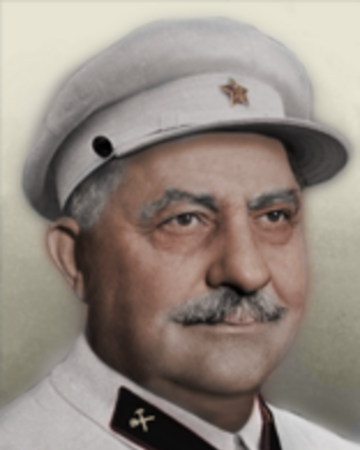
In the late 1920s, 100,000 Jews were employed in agriculture in Ukraine. This was forbidden before 1917.
The division of the territory of the Soviet republics into national autonomous regions and national regions ensured the large-scale development of culture in the Yiddish language, which received official status within the Jewish national regions in Belarus and Ukraine.
In a number of regions of Ukraine, legal proceedings were conducted in Yiddish. There was a network of theaters in Yiddish in Kyiv, Odessa and other cities. Jewish departments and classrooms were opened at the universities of Moscow, Kyiv, Kharkov, Minsk and other cities, while research institutes were created to study Jewish folklore, language and linguistics.[13]
A Jewish writer from Warsaw, Israel Joshua Singer, wrote about Minsk (Belarus) in 1926: “Four languages—Belarusian, Russian, Polish and Yiddish—met me at the railway station. They looked down at me from a gray wall above…I met them at every step, in each People’s Commissariat, in every office—everywhere.”[14]
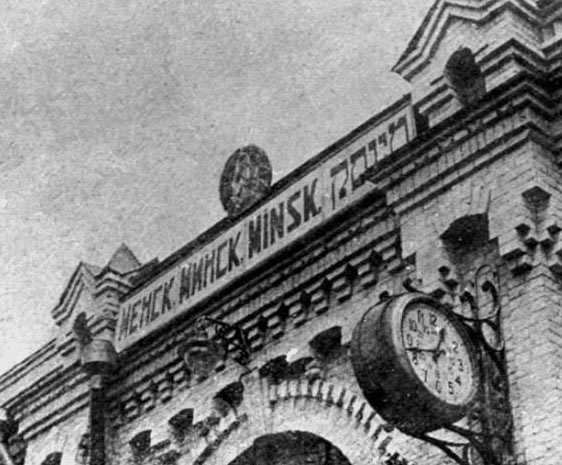
In 1939, there were 98,216 Jewish students in the universities of the USSR (11.1% of the total number of students). At the same time, the share of Jews in the population of the USSR was 1.78%.[15]
In 1934, the Jewish Autonomous Region was formed in the Far East, where Yiddish was the official language. In Ukraine during this period, a campaign was carried out advertising migration to this first Jewish national entity (this was before the founding of the State of Israel).
A Jewish State Theater was opened and the regional library was named after Sholem Aleichem, a Yiddish author and playwright. The library’s collection included a significant literature on Jewish topics. In 1939 there were about 18,000 Jewish settlers in the Jewish Autonomous Region. But migration to the Far East did not arouse a great deal of enthusiasm among Ukrainian Jews. Jewish religious organizations did not support this project. The construction of cities was only just beginning.
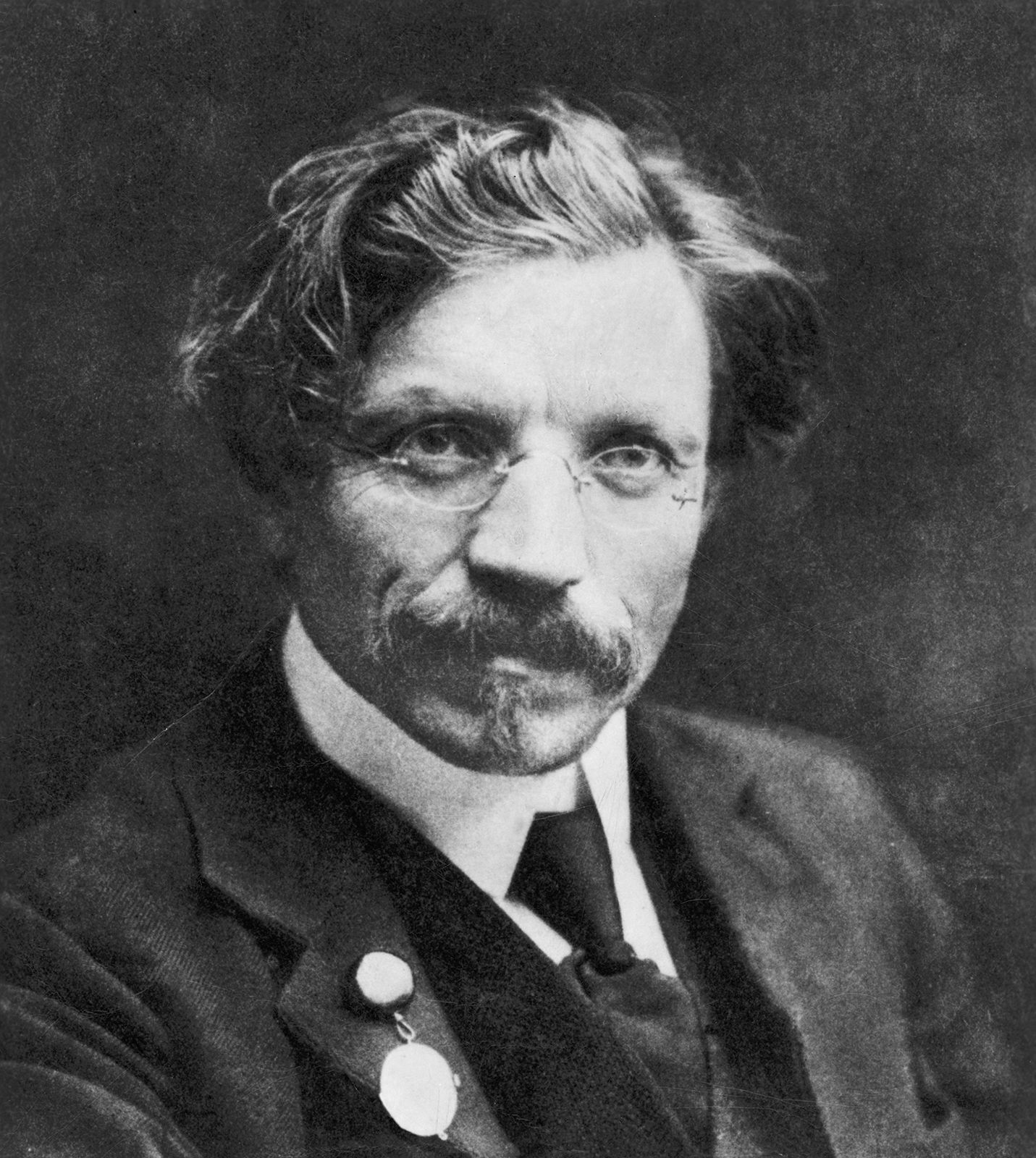
At the same time, in Ukrainian cities and villages, the Jewish population felt quite safe prior to the attack of Nazi Germany. Tragically, it was those few thousand Jewish families from Ukraine who moved to the Jewish Autonomous Region before 1941 who would escape the ensuing Holocaust.
The result of the korenization policy was the creation of a multi-ethnic education system. In the Ukrainian SSR by the spring of 1938, there were 21,656 schools, and teaching was conducted in 21 languages. There were 18,101 schools with the Ukrainian language of instruction, 1,550 schools with Russian, 512 German, 312 Jewish (Yiddish), 163 Moldavian, 54 Bulgarian, 50 Polish, 19 Uzbek, 14 Czech, 12 Greek-Hellenic, nine Belarusian, five Tatar, four Armenian, two Turkmen, two Kyrgyz, and one each in Swedish and Kazakh. There were 838 mixed-language schools.[16]
Many national schools were too small. For example, in the Czech school in Kyiv, there were only 19 students and three classes. Some of the students did not know Russian well and there were not enough teachers and materials for full study in the Czech language.
Korenization began to be curtailed in the late 1930s. Some historians consider this was caused by the diversion of resources in anticipation of a coming world war. But more than that was involved. First of all, there was not yet a common language in the Soviet Union. In many of the remote regions of tsarist Russia, few people spoke and understood Russian. They had sporadic contacts with the central Russian authorities and these were typically conducted by representatives of the local tribal aristocracy (often via interpreters).
Often, the communities of the national outskirts continued to live according to their own laws, practicing their religion and keeping their elite in power, provided they paid taxes and remained formally loyal to the central government. During the elimination of illiteracy in early Soviet period, the peoples of the Soviet Union were educated in their native language and the Russian language was taught as a second language. As a result, many spoke Russian poorly.
During the military drills of the Red Army in 1930s, conditions of what was called “Babylonian pandemonium” manifested itself. In a military battalion composed of Kyrgyz, Russians, Tatars, Ukrainians, Jews, Bashkirs, Armenians and Chechens, soldiers often could not understand each other or understand what was expected of them by their officers.
The industrialization of the 1930s contributed to the migration of workers from the national republics to other regions. The schools created in the new industrial cities and regions continued with native language of instruction, but graduates of these “national” schools experienced difficulties with entering universities in other republics, outside their national regions. The linguistic diversity of the 1920s was reduced to the obligatory study of the language of the given national republic or national autonomous zone, together with Russian as the language of inter-ethnic communication. This decision caused discontent among non-Russia students. They saw injustice in the fact that ethnic Russian students already knew the Russian language well and therefore enjoyed an advantage in the pursuit of their careers.
In the period after the revolution, the USSR tried to promote the idea of a universal language of international communication, like the artificial language of Esperanto. But economic calculations showed that the training of teaching staff, the translation of all literature into a new language, and the retraining of all adults and children would take too much time and require huge funds.
In addition to the formation and development of national cultures, special attention was paid to the propaganda of internationalism by means of culture. At that time, the Latin term “propaganda” had not yet acquired negative connotations in the English language. One of the most popular movies was the comedy “Circus” from 1936. It criticized racism in the United States.
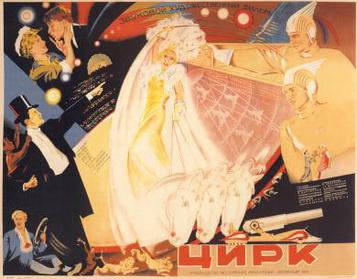
At the end of the movie there is a scene with a lullaby, where a Black American child is lulled by representatives of various peoples of the Soviet Union in their own languages, including Yiddish. “One hundred ways, one hundred roads are open for you,” sang the lullaby. (You can view the most famous song from the film, “Song of the Motherland,” here on YouTube.)
1939-1941: Anti-Semitism as a problem for integration of western Ukraine
In 1939, the inhabitants of what became western Ukraine abruptly found themselves joined to the Soviet Union following the signing of the Molotov–Ribbentrop Non-Aggression Pact in August of that year. A Soviet reality had developed in Ukraine during the previous 20 years, whereas many residents of western Ukraine were already under the influence of fascist ideas, popular throughout Europe at that time.
Particularly unnatural to many of the new “western” Ukrainians was the fact that Jews enjoyed full rights as citizens. Nazism and other forms of imperialist nationalism was teaching that non-Jews had advantages by birthright, not by achieving things with his or her own hands or mind.
Subsequently, Nazi and Banderite pogroms in 1941 in the towns and cities of western Ukraine, local Nazis and radical nationalists sought, as it were, to “put the Jews in their place,” that is, to return them to a status of second-class people and citizens. For the right-wing, ultra-nationalists, equality with the Jews was seen as an overthrow of the entire social hierarchy. The rightists sought a return to “normalcy” through the pogroms of 1918-1919 and 1941-1943. The popular chant of Ukrainian nationalists in 1941 was the same as today: “Stranger, remember, the Ukrainian is master here!”
Canadian historian of Ukrainian origin John-Paul Himka has written of the motives of anti-Semites in Lviv, western Ukraine, and compares the pogroms of 1918 and 1941. “Much of what William W. Hagen wrote about the motivations and behavior of the pogrom crowd in Lviv in 1918 also applies to the crowd in Lviv in 1941. His observation that the pogrom of 1918 was a social ritual playing out “public dramas designed to repair a society fallen out of the rightful order” can certainly apply to 1941. This was the meaning of the rituals that identified Jews with communism.

The perception that Jews had risen from near the bottom of the social hierarchy before the war to near the top under the Bolsheviks explains the vehement insistence on putting the Jews back in their place. The social advancement of Jews under the Soviets violated “a deep-seated insistence” within Polish and Ukrainian popular culture that Jews should remain “passive, powerless, and defenseless.” As in 1918, “carnavalesque elements were central” to the “character and purpose” of the 1941 pogroms. This is borne out by the impressment of Jewish professionals to clean streets and latrines during both pogroms.”[17]
In other words, the fury of the fascist mobs was due to the desire to possess slaves. But it was also an inadvertent recognition of the progress and development of the Jewish community in Soviet Ukraine prior to the Nazi occupation.
As well, in contrast to western Ukraine, which had experienced only one-and-a-half years of Soviet power by 1941, there were fewer outbreaks of violent anti-Semitism among the Ukrainians in the eastern/central/southern parts of the country in 1941. There, the Holocaust was mainly conducted by the occupying German authorities or by the Banderites who arrived from western Ukraine and Poland.
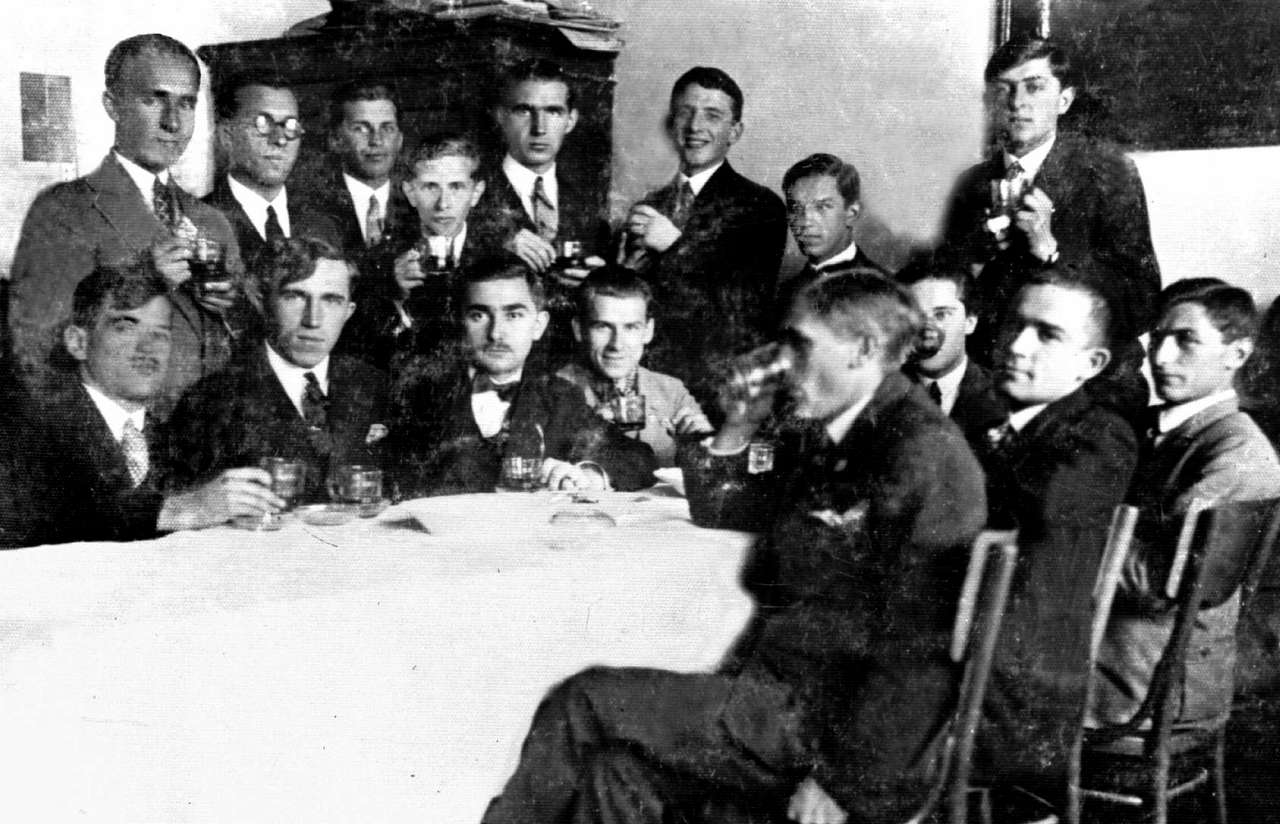
Simply put, the Soviet policies of education for all and the central place of internationalism in the Soviet outlook proved to be effective in forestalling and limiting the Holocaust as it unfolded. Tragically, it would take several years of cataclysmic war on the territories of Ukraine and everywhere else in Eastern Europe to defeat German Nazism and the Holocaust which the Nazis and their local collaborators waged.

-
https://gazeta.ua/articles/politics/_gonta-prijde-poryadok-navede-v-umani-svoboda-provela-smoloskipnij-marsh/492928 ↑
-
https://www.religion.in.ua/zmi/foreign_zmi/18521-xolernye-i-kartofelnye-bunty-pervoj-poloviny-xix-veka-kak-otrazhenie-religioznogo-mirovozzreniya-russkogo-krestyanstva.html ↑
-
https://focus.ua/politics/523427-iudei-ubivayut-detey-eks-deputat-mihail-kovalchuk-popal-v-antisemitskiy-skandal ↑
-
https://ru.wikisource.org/wiki/%D0%A1%D0%BE%D1%86%D0%B8%D0%B0%D0%BB%D1%8C%D0%BD%D1%8B%D0%B5_%D0%BA%D0%BE%D1%80%D0%BD%D0%B8_%D0%B0%D0%BD%D1%82%D0%B8%D1%81%D0%B5%D0%BC%D0%B8%D1%82%D0%B8%D0%B7%D0%BC%D0%B0_%D0%B2_%D1%81%D1%80%D0%B5%D0%B4%D0%BD%D0%B8%D0%B5_%D0%B2%D0%B5%D0%BA%D0%B0_%D0%B8_%D0%B2_%D0%BD%D0%BE%D0%B2%D0%BE%D0%B5_%D0%B2%D1%80%D0%B5%D0%BC%D1%8F_(%D0%9B%D0%BE%D0%B7%D0%B8%D0%BD%D1%81%D0%BA%D0%B8%D0%B9) ↑
-
https://www.wikiwand.com/ru/%D0%A3%D0%BA%D1%80%D0%B0%D0%B8%D0%BD%D0%B8%D0%B7%D0%B0%D1%86%D0%B8%D1%8F ↑
-
https://ru.wikipedia.org/wiki/%D0%9E%D0%97%D0%95%D0%A2#%D0%9A%D0%BE%D0%BC%D0%97%D0%95%D0%A2 ↑
-
https://ru.wikipedia.org/wiki/%D0%98%D1%81%D1%82%D0%BE%D1%80%D0%B8%D1%8F_%D0%B5%D0%B2%D1%80%D0%B5%D0%B5%D0%B2_%D0%B2_%D0%A0%D0%BE%D1%81%D1%81%D0%B8%D0%B8 ↑
-
https://ru.wikipedia.org/wiki/%D0%98%D1%81%D1%82%D0%BE%D1%80%D0%B8%D1%8F_%D0%B5%D0%B2%D1%80%D0%B5%D0%B5%D0%B2_%D0%B2_%D0%A0%D0%BE%D1%81%D1%81%D0%B8%D0%B8 ↑
-
https://ru.wikipedia.org/wiki/%D0%9A%D0%BE%D1%80%D0%B5%D0%BD%D0%B8%D0%B7%D0%B0%D1%86%D0%B8%D1%8F#CITEREF%D0%91%D0%BE%D1%80%D0%B8%D1%81%D0%B5%D0%BD%D0%BE%D0%BA2015 ↑
-
https://psi329.cankaya.edu.tr/uploads/files/himka%2C%20The%20Lviv%20Pogrom%20of%201941%20%282011%29.pdf ↑
CovertAction Magazine is made possible by subscriptions, orders and donations from readers like you.
Blow the Whistle on U.S. Imperialism
Click the whistle and donate
When you donate to CovertAction Magazine, you are supporting investigative journalism. Your contributions go directly to supporting the development, production, editing, and dissemination of the Magazine.
CovertAction Magazine does not receive corporate or government sponsorship. Yet, we hold a steadfast commitment to providing compensation for writers, editorial and technical support. Your support helps facilitate this compensation as well as increase the caliber of this work.
Please make a donation by clicking on the donate logo above and enter the amount and your credit or debit card information.
CovertAction Institute, Inc. (CAI) is a 501(c)(3) non-profit organization and your gift is tax-deductible for federal income purposes. CAI’s tax-exempt ID number is 87-2461683.
We sincerely thank you for your support.
Disclaimer: The contents of this article are the sole responsibility of the author(s). CovertAction Institute, Inc. (CAI), including its Board of Directors (BD), Editorial Board (EB), Advisory Board (AB), staff, volunteers and its projects (including CovertAction Magazine) are not responsible for any inaccurate or incorrect statement in this article. This article also does not necessarily represent the views the BD, the EB, the AB, staff, volunteers, or any members of its projects.
Differing viewpoints: CAM publishes articles with differing viewpoints in an effort to nurture vibrant debate and thoughtful critical analysis. Feel free to comment on the articles in the comment section and/or send your letters to the Editors, which we will publish in the Letters column.
Copyrighted Material: This web site may contain copyrighted material the use of which has not always been specifically authorized by the copyright owner. As a not-for-profit charitable organization incorporated in the State of New York, we are making such material available in an effort to advance the understanding of humanity’s problems and hopefully to help find solutions for those problems. We believe this constitutes a ‘fair use’ of any such copyrighted material as provided for in section 107 of the US Copyright Law. You can read more about ‘fair use’ and US Copyright Law at the Legal Information Institute of Cornell Law School.
Republishing: CovertAction Magazine (CAM) grants permission to cross-post CAM articles on not-for-profit community internet sites as long as the source is acknowledged together with a hyperlink to the original CovertAction Magazine article. Also, kindly let us know at info@CovertActionMagazine.com. For publication of CAM articles in print or other forms including commercial internet sites, contact: info@CovertActionMagazine.com.
By using this site, you agree to these terms above.
About the Author
Dmitri Kovalevich is a Ukrainian journalist and activist of the banned Ukrainian communist organization ‘Borotba’.


[…] fremtidige byen Kiev er det såkalte «Kievan-brevet» fra ca. 930 e.vt. funnet i Egypt.[1] Den er skrevet på hebraisk og signert av representanter for Kievs innbyggere med […]
[…] ingen tilfeldighet at pilegrimer kommer til Uman. Grunnleggeren av hasidismen, Nachman av Breslov, [3] testamenterte for å begrave kroppen hans på stedet for massedøden til jøder, og vurderte […]
[…] in the Donbass Republics—Similar to Israelis and U.S. Backed Terrorists in Syria” and “Ukrainian Nationalists Have Long History of Anti-Semitism which the Soviet Union Tried to Com… and “Ukraine War is ‘Biden’s War’ Now” and “How Much Longer Can […]
Is it OK now in 2022 for any nation to attack another nation when they have a bad human rights record? Better be careful what you wish for.
Is it OK now for a disgruntled Russian government to attack Ukraine, and perhaps more neighboring countries that treated Jews badly, like Poland? Not a good idea.
What’s the reason to try to make Ukraine’s bad history a reason to say they deserve what Russia is doing to them?
When you highlight all nations with human rights violations and an anti-semetic history, THEN you will be a credible authority on anti-semetism.
You can express your moral opinions when you are writing in a moral context.
The Russians launched their military operation in February because the Ukrainians significantly increased their shelling of the Donbas regions that had refused to abide with the US-installed coup government in Kiev in 2014. Further, the Ukrainian “leader” was clamouring for nuclear weapons in the lead-up to the Russian action, and the Ukrainian ethnic cleansing Joint Forces Operation that began in 2014 was undergoing a significant build-up of men and materiel, this ethnic cleansing operation having been supported by the US and vassal NATO states for eight years prior to the commencement of the Russian operation.
[…] Ukrainian Nationalists Have Long History of Anti-Semitism which the USSR Tried to Combat, by Dmitri … […]
Before Russia’s invasion things were very good for the Jewish community of Ukraine.
Ukraine’s Jewish community was on the up.
After centuries of pogroms and emigration driven by antisemitism, followed by the devastation of the Holocaust in World War II, and then Soviet repression, recent decades brought a flourishing of synagogues, Jewish schools and community centers. Estimates of how many Jews remained vary, in part because of differences in how Jewish communities define who is Jewish. But Jewish aid organizations estimate that 200,000 Ukrainian Jews — some religious, many more not — were integrated into the life of the country. The most notable part of secular President Volodymyr Zelensky’s Jewishness was that it was barely considered a factor in his 2019 campaign. The Jewish community certainly did not welcome the Russian invasion.
How did the Jewish community feel about the ongoing ethnic cleansing operation in Donbas bering conducted by the armed forces of the Ukrainian state?
[…] Ukrainian Nationalists Have Long History of Anti-Semitism which the Soviet Union Tried to Combat —… […]